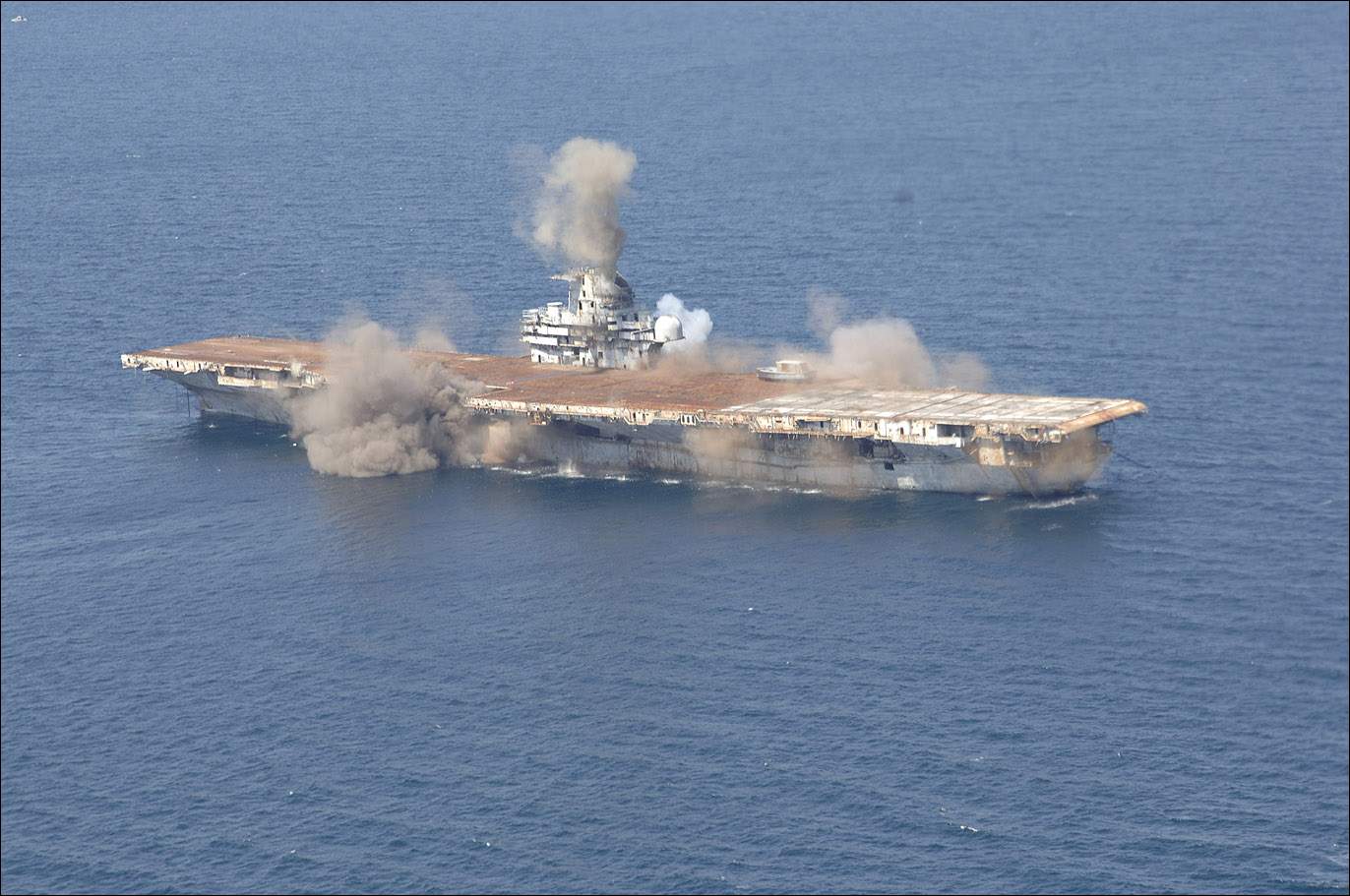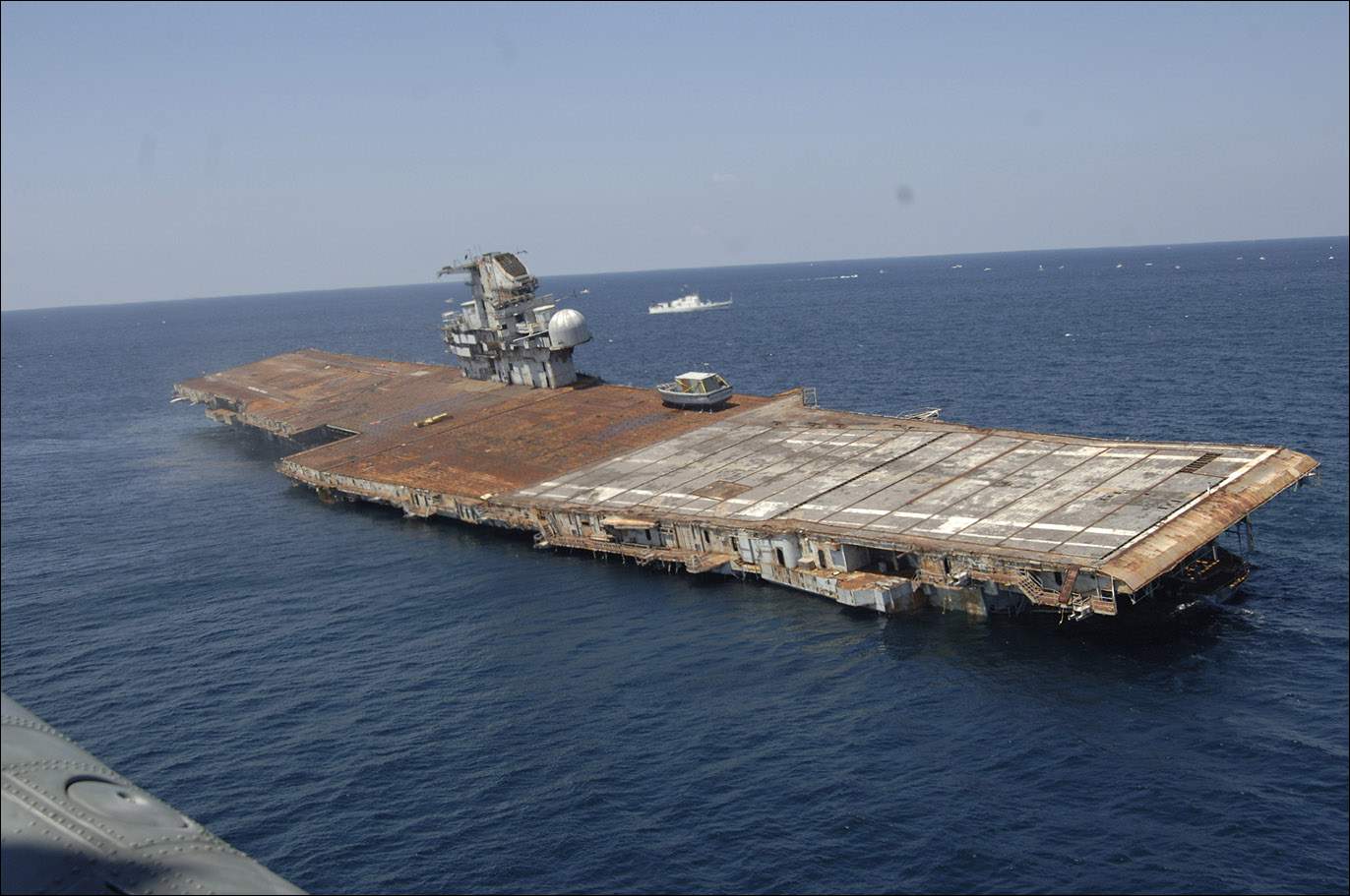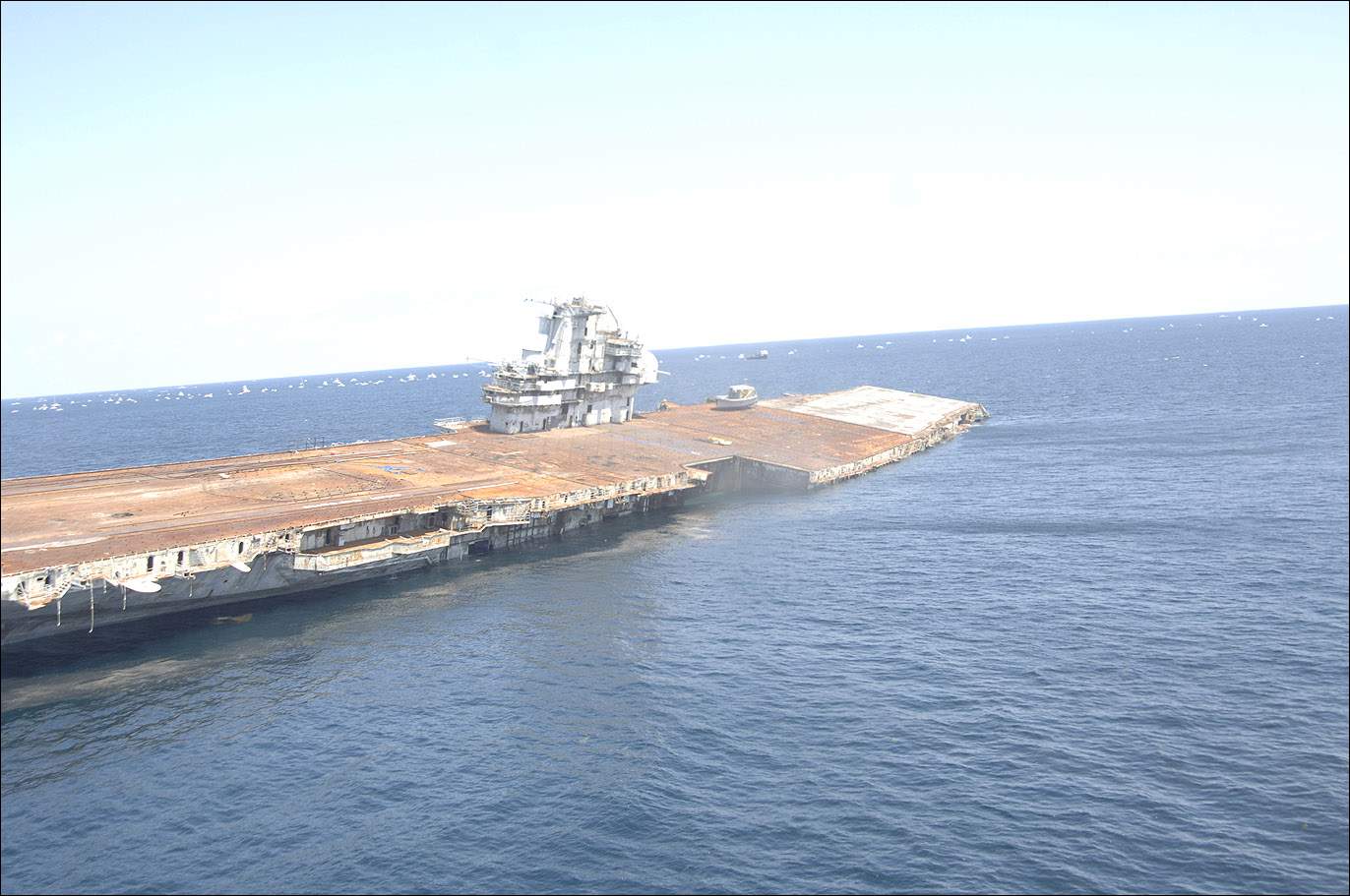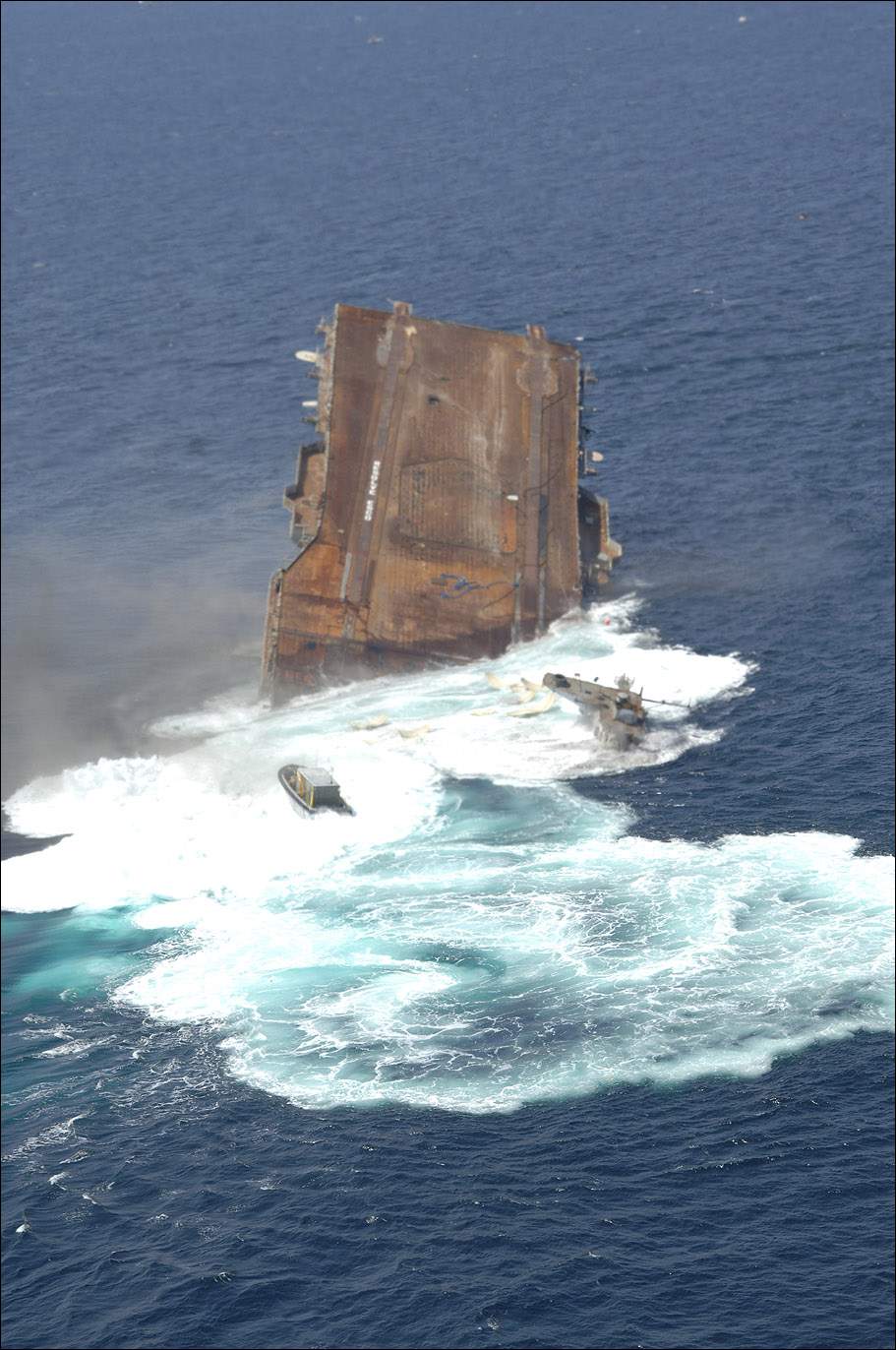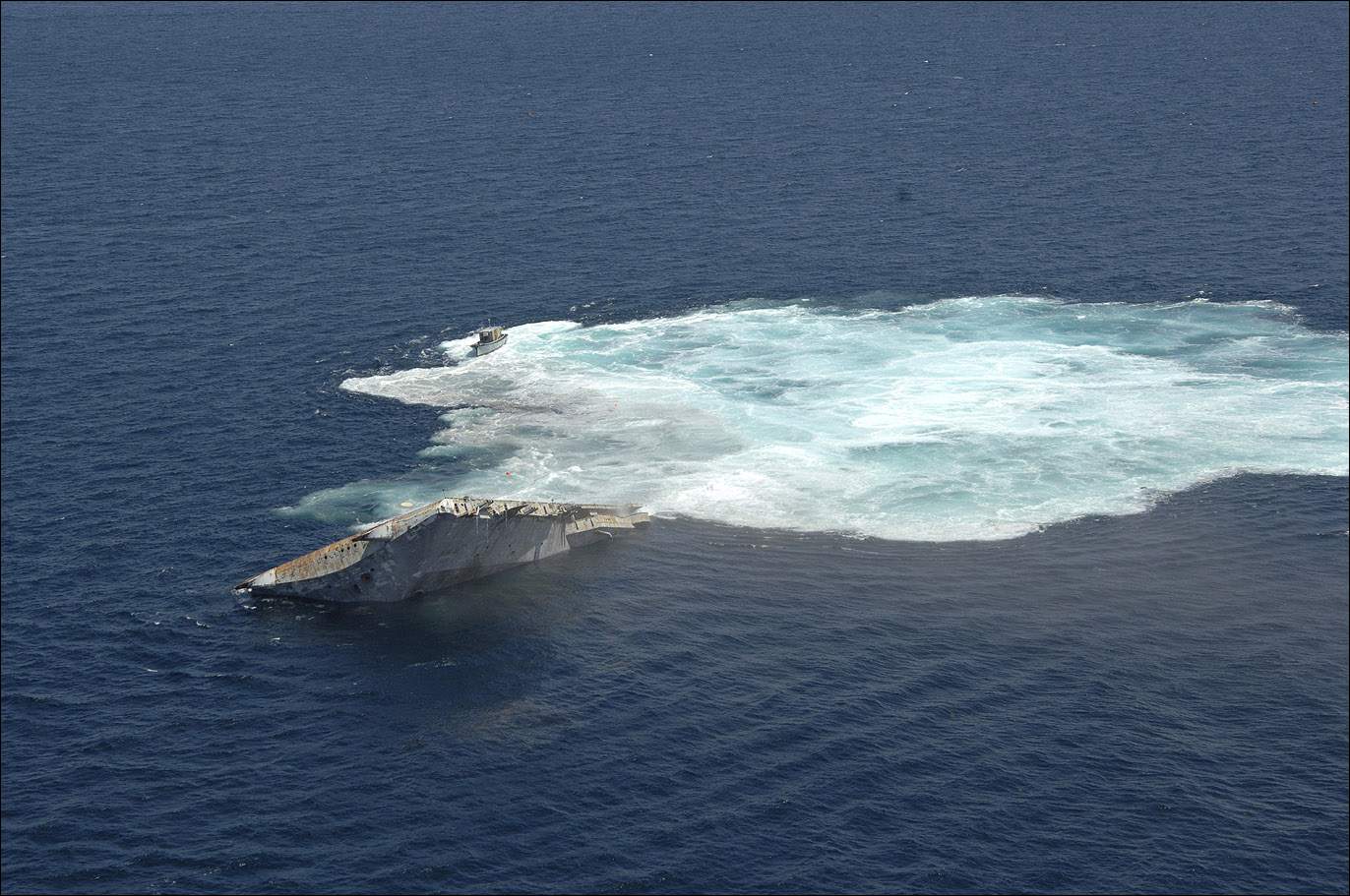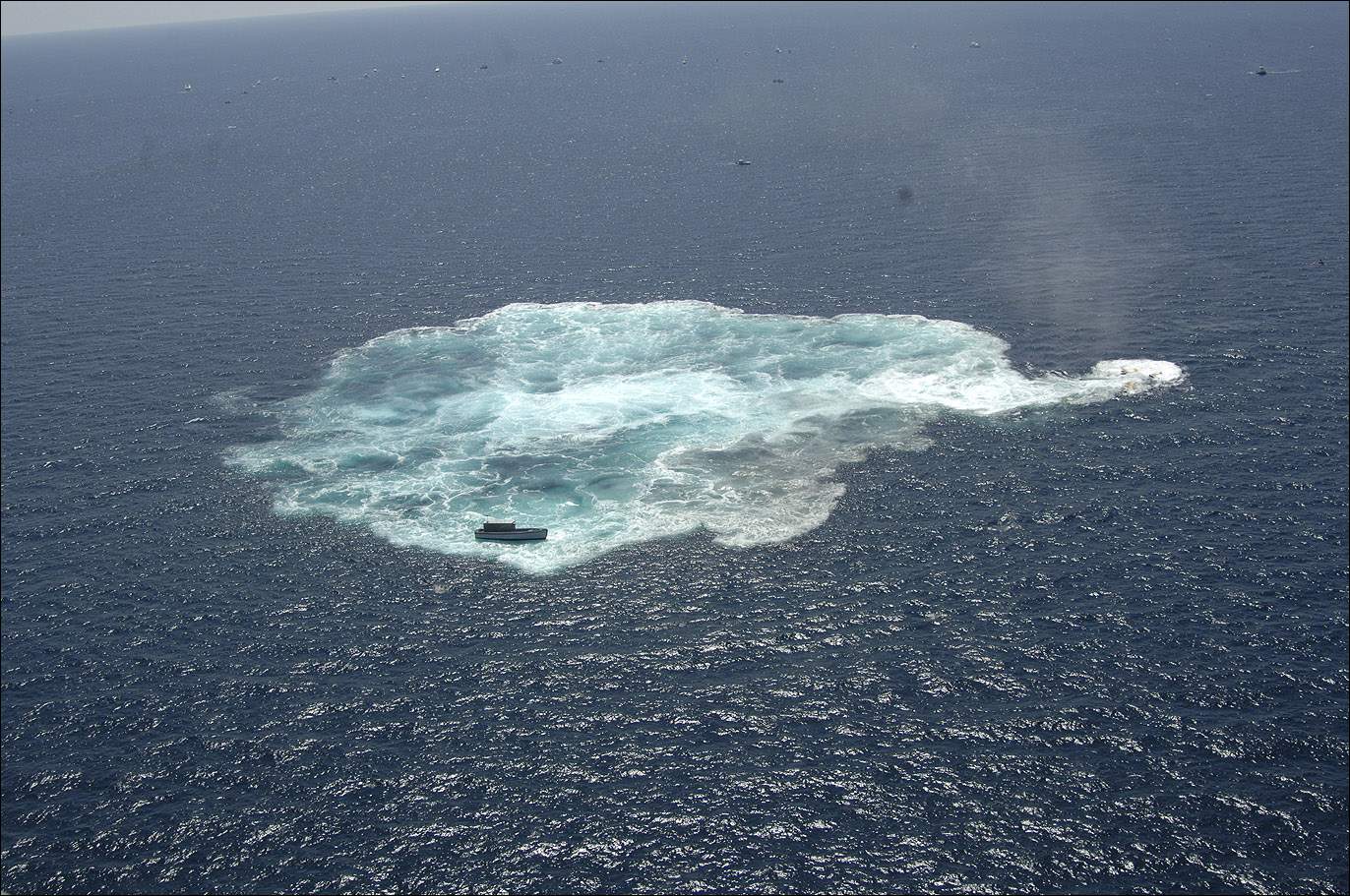|
Pensacola, FL – May 2006 – The ex-Oriskany, a decommissioned
aircraft carrier, became the largest ship intentionally sunk as an
artificial reef Wednesday (May 17) when it was sunk approximately 24
miles off the coast of
Pensacola, Florida. After 25 years of service to the Navy in
operations in Korea, Vietnam and the Mediterranean, the ex-Oriskany
will now benefit marine life, sport fishing and recreation diving
off the coast of the Florida panhandle.
The 888-foot ship took about 37 minutes to sink below the surface
after strategically placed explosives were detonated at 10:25 a.m.
Central Daylight Time. The Navy developed an engineered sink plan to
place the 32,000 ton ship upright on the ocean floor in a
North-South orientation at an existing artificial reef site at a
depth of approximately 212 feet, as requested by the State of
Florida.
“The Navy and Florida team performed flawlessly to execute the
sinking. The Navy is thrilled that ex-Oriskany will continue to
serve the United States as a tourist and diving attraction off the
coast of Florida,” said Glen Clark, deputy program manager of the
Navy’s Inactive Ships Program Office. “This is a fitting new
beginning for this illustrious ship, and we are proud of the
information she has provided us for the reefing of future Navy ships
as artificial reefs.”
The Navy has been working with the U.S. Environment Protection
Agency, Florida’s Fish and Wildlife Conservation Commission, the
Escambia County Marine Resources Division and the local Pensacola
area community since 2003 and has conducted several scientific
studies that demonstrated that ex-Oriskany would create an
environmentally safe artificial reef.
The ex-Oriskany was the first ship to be environmentally prepared
using the EPA’s “Best Management Practices for Preparing Vessels for
Use as Artificial Reefs,” and is also the first ship to receive a
risk-based Polychlorinated Biphenyl (PCB) disposal approval from the
EPA based on the agency’s findings that the reefing would not pose
an unreasonable risk of injury to health or the environment.
A
few days before the scuttling event, a Navy Explosive Ordnance
Disposal team placed explosives and detonation equipment on 22 sea
chest pipes and valves inside the ship, which were armed the morning
of the sinking.

U.S.S.
Oriskany CV/CVA 34 1945-1976
Ownership of the vessel transferred to the state of Florida as the
ship landed on the ocean floor. A 1998 study funded by the state of
Florida by researchers from Florida State University and the
National Oceanic and Atmospheric Administration (NOAA) shows that
artificial reefs generate more than $92 million dollars in annual
spending by locals and visitors in Escambia County. An additional
interpretation by NOAA in 2006 indicates the Oriskany will add an
average of $9 million in annual spending.
The Navy will start to offer additional ships for artificial reefs
later this year.
|
![]()

